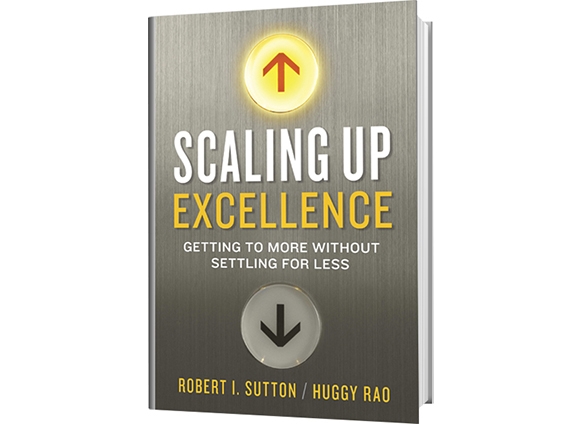I am taking a class from the Stanford Graduate School of Business right now. But no, I haven’t had to travel to Palo Alto or pay thousands of dollars in tuition. Thanks to the MOOC concept (massive online open course), I am able to take the class for free from the comfort of my own home. The class is Scaling Up Your Venture Without Screwing Up taught by well-known professors Huggy Rao and Robert Sutton. The class follows the book written by the professors, Scaling Up Excellence, and is supplemented by short video lectures, video interviews with entrepreneurs who have successfully scaled companies (such as Ben Horowitz), and individual and team assignments.

I am taking this course because of my involvement with a venture capital fund and venture-backed companies. The goal of any venture-backed company is to scale as quickly as possible.
The class material has caused me to reflect on my own experiences in trying to scale startups over the last few years. I’ll share 3 lessons I’ve learned from my experience:
1. Interpret data correctly It is impossible to gather enough information for making a perfect decision in any business, and startups are especially uncertain. We have to make the best decisions possible given the data available. Due to the difficulty of gathering data, it is extremely important to interpret the available data correctly.
I learned this lesson the hard way a few years ago with a company that manufactured product in the US and sold in both US and Canada. With the downturn in 2007, sales in the US dropped by 90% while Canada sales continued to grow. The US dollar also weakened significantly and became worth less than the Canadian dollar, which helped margins in Canada.
We started to put our focus on Canadian sales while waiting for the US to recover. However, in late 2008 and through 2009, the Canadian dollar reversed course and weakened 20-25% against the US dollar. This significantly cut into our margins. I looked at the data and found that even after the drop in US prices with the downturn, our percent margin was now higher in the US.
As a result, we turned our focus to the US. We hired a sales team and even opened a retail store. Unfortunately, our efforts didn’t lead to the boost in sales we hoped. Even more unfortunately, I realized later that even though our percent margin was higher in the US, our dollar margin was still higher in Canada due to higher prices.
Of course, we couldn’t have predicted exchange rates, but by late 2009 the US and Canadian dollars returned to about par. Due to my misinterpretation of the data, we wasted a lot of money trying to boost US sales while losing a year during which we could have doubled down on the stronger Canadian market.
2. Hire only to alleviate pain, not for pleasure I learned this lesson from experience and found it articulated well by 37Signals (now Basecamp) co-founder Jason Fried. "First, we hire late. We hire after it hurts. We hire to alleviate pain, not for pleasure. Who hires for pleasure? Any company that hires people before it needs them is hiring for pleasure. It's an indulgence we've never allowed ourselves.”
I’ve been involved in decisions several times where someone was hired too early, too fast, or just because they’re a good person who we didn’t want to lose.
3. Give ground grudgingly This is another lesson I’ve learned from experience but found articulated brilliantly by someone else. Ben Horowitz wrote a blog post called Taking the Mystery out of Scaling a Company. In it, he compares scaling a company to an offensive lineman in American Football. While in pass protection, the offensive lineman can’t protect the the quarterback by standing his ground or moving forward, or the defensive lineman will get around him. His goal is to back up as slowly as possible, hoping to give the quarterback enough time to throw the ball.
As a team grows, it becomes necessary to put in place processes and procedures that facilitate communication, knowledge transfer, and decision making. This is necessary to run the company smoothly, but it also creates bureaucracy and complexity in the organization. The principle is to give ground grudgingly. Only add processes and procedures as they become necessary.
I joined a very small team a few years ago. I had some experience in a big company, and I thought the small company would be successful if it acted like a big company. I worked with the CEO to define the organizational structure and associated roles. We put written procedures in place for all business processes. We even started annual performance reviews. All of this was for a company with less than 10 employees.
Our intent was good. We were trying to follow the E-Myth principle by working on the business and preparing for growth. But we spent unnecessary time creating unnecessary complexity. We should have waited until growth made this steps necessary.
Conclusion
Scaling a company is messy. Often the answers can only be found through trial and error. But some errors can be avoided by following general principles learned from others experiences.
